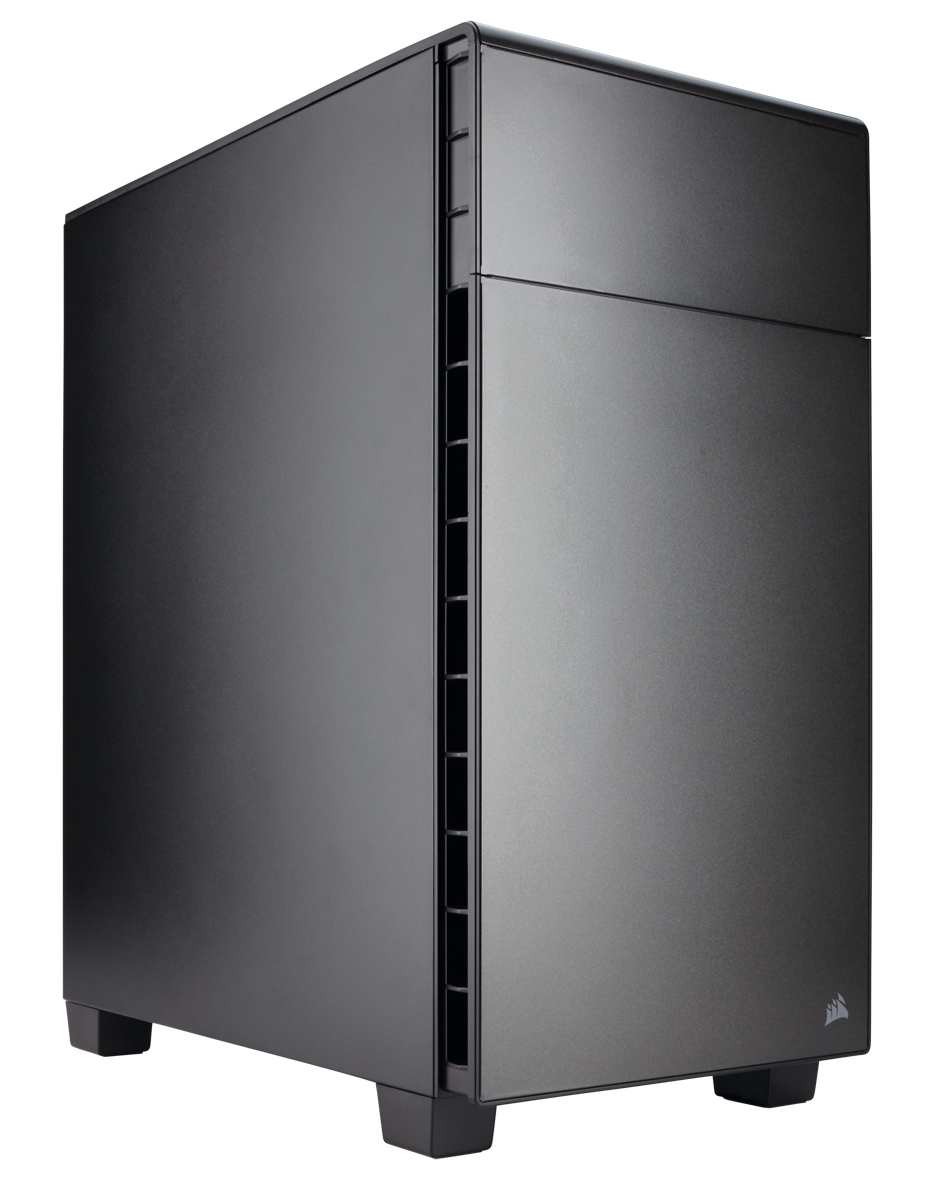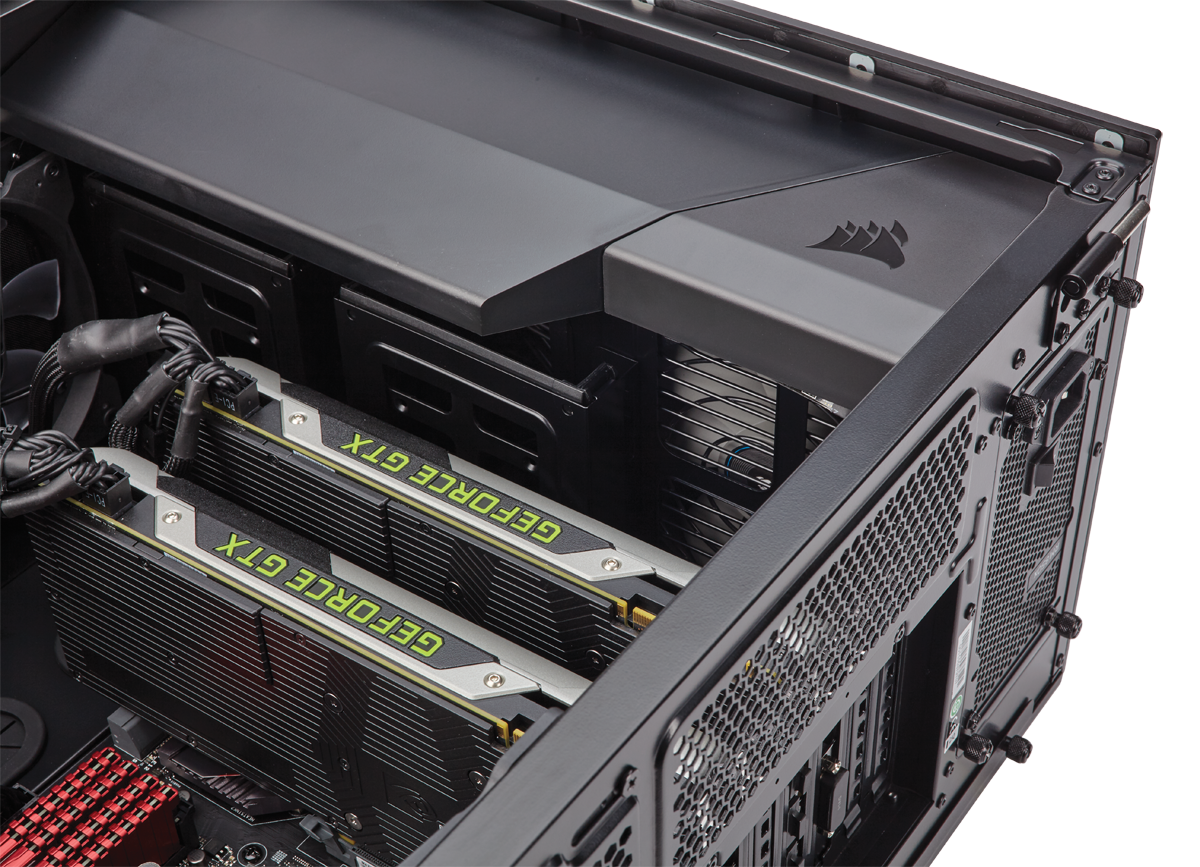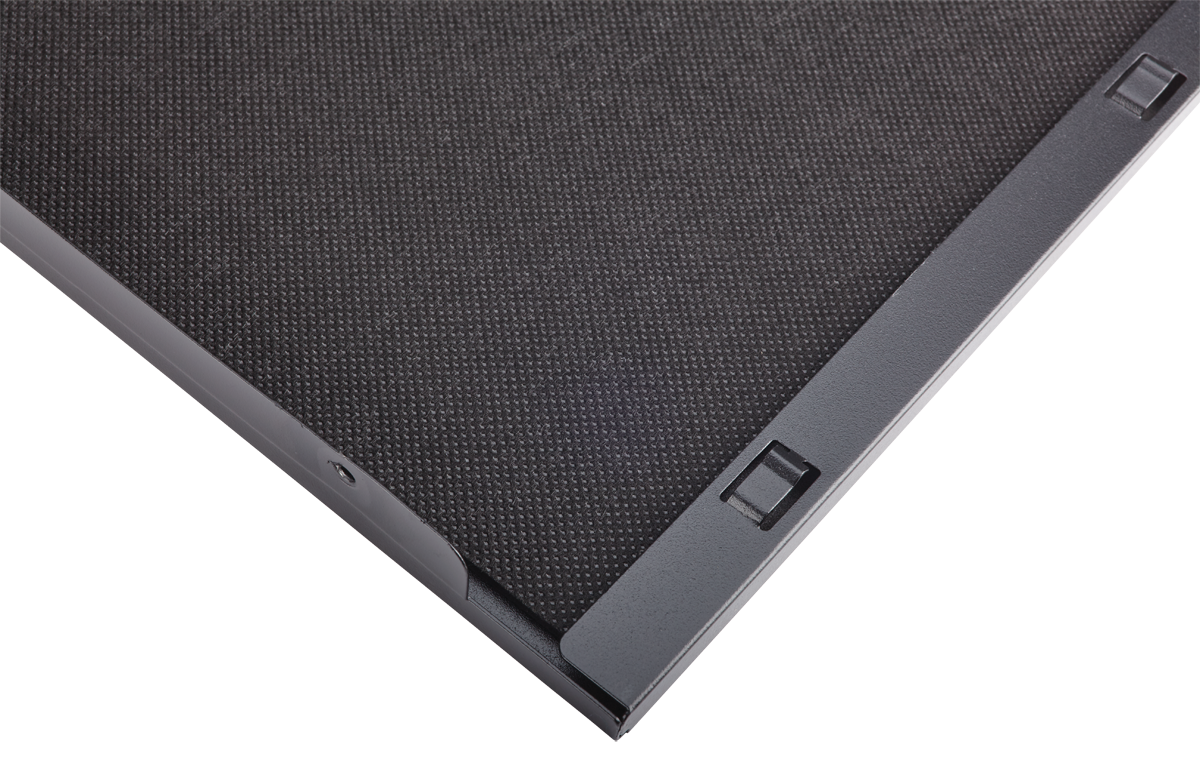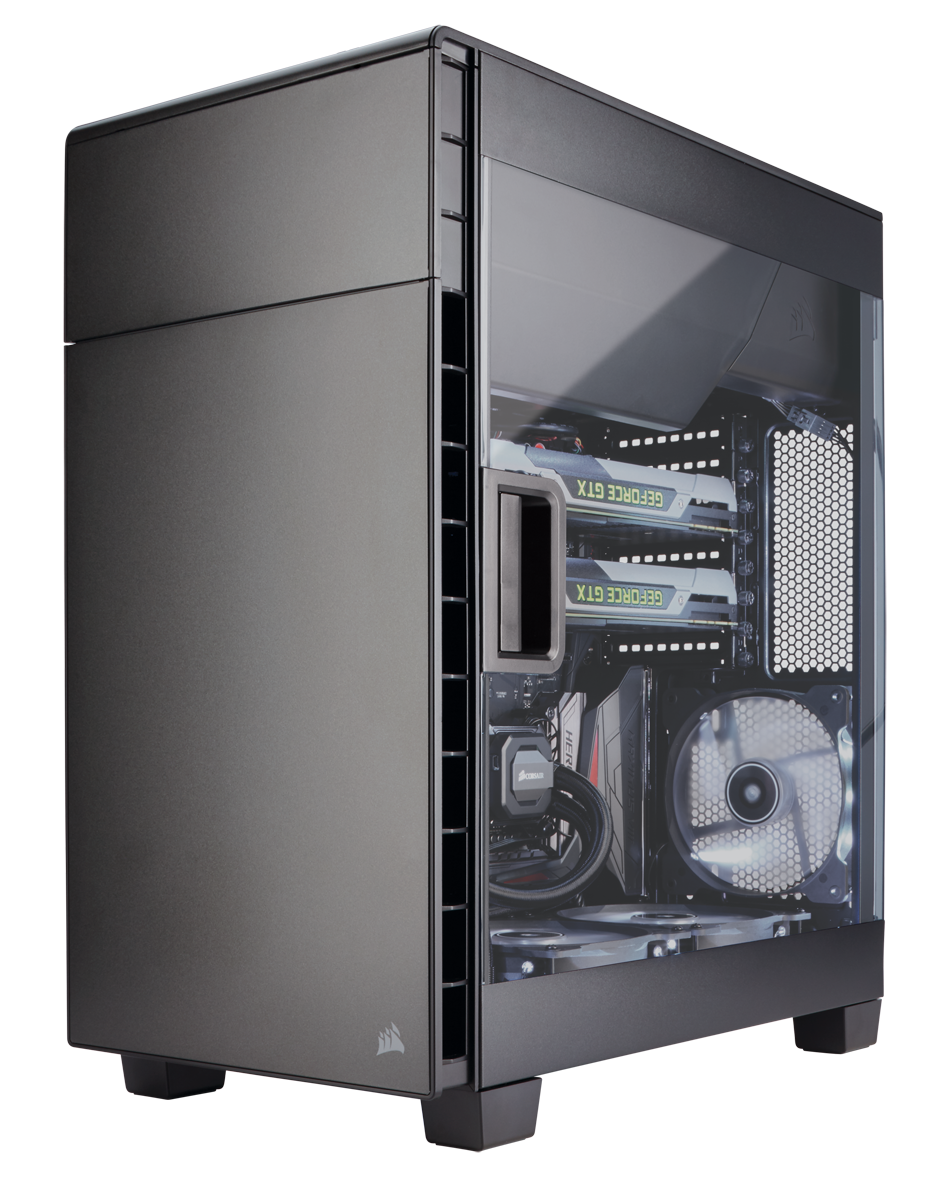Corsair Releases Inverted-ATX Carbide 600C, 600Q Cases
Corsair has been a well-known and highly-regarded case manufacturer for several years now. The company has a wide selection of ATX, mATX and Mini ITX cases, but it had never dabbled in the niche Inverted-ATX market, until now.
Corsair announced that it has launched two new cases, the Carbide 600Q and 600C, that make use of an Inverted-ATX internal layout that the company said puts the main heat generating components, the CPU and GPU(s), directly in the airflow path of the intake and exhaust fans. Corsair said this orientation aids in creating a high-airflow, low-noise environment that ensures your system components maintain a low temperature.
Both Carbide 600 cases include three AF140L 140 mm air flow fans, two as front intakes and one as a rear exhaust. All three fans are connected to an external 3-speed fan controller, allowing users to select how fast the fans spin.
The floor of the Inverted-ATX cases can accommodate three more 120 mm fans. Corsair said that the front can support a 280 mm radiator, and the bottom can fit a 360 mm radiator. The documentation suggests both can be installed at the same time, but the images seem to suggest that only one at a time can be used.
Both the 600Q and 600C feature the same interior layout. The power supply mount is located at the top above the motherboard tray. It is covered by a steel enclosure to hide the cables, keeping with the overall sleek look.
The two tool-free 3.5-inch hard drive cages are also found below the wall, keeping them out of sight. There are an additional three 2.5-inch tool-free drive enclosures on the back side of the motherboard tray. The cases also have two 5.25-inch external drive bays hidden behind a hinge, so even if you have a drive installed the front bezel will still keep its stylish face.
Corsair is offering two Carbide 600 cases for one fundamental reason. Some people prioritize silence whereas others enjoy looking at their hardware. The Carbide 600Q (Quiet) omits the windowed side panel and in exchange fits the inside of the case with sound damping materials. Corsair said it lined the inside of the side panels, as well as the top and front panels of the case. The Carbide 600C (Clear) doesn’t include any of the sound damping lining. Instead, it has a large, full side panel window with a hinge and latch, which gives an unimpeded view of the components inside.
Get Tom's Hardware's best news and in-depth reviews, straight to your inbox.
Corsair said the Carbide 600C and 600Q cases will be available in December through its world-wide network of resellers. Both cases carry the same $149.99 MSRP.
Follow Kevin Carbotte @pumcypuhoy. Follow us on Facebook, Google+, RSS, Twitter and YouTube.
Kevin Carbotte is a contributing writer for Tom's Hardware who primarily covers VR and AR hardware. He has been writing for us for more than four years.
-
voodoochicken I don't see why they couldn't apply some sound dampening to the windowed case also. Depending on the material, it can make a difference even with window seepage, especially if there's a lot of fans running.Reply -
Gam3r01 Am I the only one that sees no point to inverted cases?Reply
Sure its something different, and I do like how sleek this case is, but I highly doubt inverting the case will impact thermals much if at all. And with more and more components coming with branding on them (IE Corsairs own LED logo on the cooler, LED nameplates on GPUs and so on) the windowed version would bother my OCD. -
kcarbotte ReplyI don't see why they couldn't apply some sound dampening to the windowed case also. Depending on the material, it can make a difference even with window seepage, especially if there's a lot of fans running.
I was wondering the same thing while I was writing this. I expect it has to do with the cost of materials. The acrylic window and latch probably cost more than the solid steel panel, so the cut the sound damping to balance the cost rather than raising the price.
This is just a guess though. I'm not sure why Corsair chose this path.
Am I the only one that sees no point to inverted cases?
Sure its something different, and I do like how sleek this case is, but I highly doubt inverting the case will impact thermals much if at all. And with more and more components coming with branding on them (IE Corsairs own LED logo on the cooler, LED nameplates on GPUs and so on) the windowed version would bother my OCD.
It's hard to say which form factor has the better airflow without hands-on testing, but I for one would like to have a case with the window on the right so that I can put my PC on my left. -
ezorb ReplyIt's hard to say which form factor has the better airflow without hands-on testing, but I for one would like to have a case with the window on the right so that I can put my PC on my left.
agreed this is the reason i like this case, my next rig my very well be in one -
kyee7k I like the exterior appearance of the 600Q, but not the interior arrangement.Reply
I really wish they would update the 550D and 650D cases as I am in need of a case. -
RCguitarist Just from the point of convection, I this case doesn't make sense. So any heat from the GPU that doesn't make it's way below the GPU will rise up and both get trapped in the case and also get sucked up into the power supply which is pulling in air from directly above the GPU.Reply -
Caanis Lupus Maybe they will offer the window separately, more expensive than just having the material installed with an option for the window side panel. *shrug*Reply -
Darkbreeze There is a reason designs moved away from top mounted power supplies. The heat sent them to early graves. Units last much longer when kept at lower temperatures, so moving them back to the top makes no sense, especially when the heat generated by the power supply on bottom mounted designs has almost entirely been kept isolated from the rest of the system through the use of independent cooling and in some cases, PSU compartments that further isolate the two systems.Reply
Going backwards seems pointless. -
Vogner16 its easy to tell why corsair did the inverted design. same reason they have 30 cases.Reply
somebody will think it looks really cool and pay them $180 for it.
on the side it cools just as well as normal case -
Darkbreeze Cooling with a top mounted PSU isn't the problem. All that heat passing through and being used by, the PSU, for IT'S cooling, is, or rather, used to be, when top mounted PSUs were common. I for one sure as heck don't want to be trying to cool my PSU when it's under a sustained, high gaming load, using heated air.Reply




